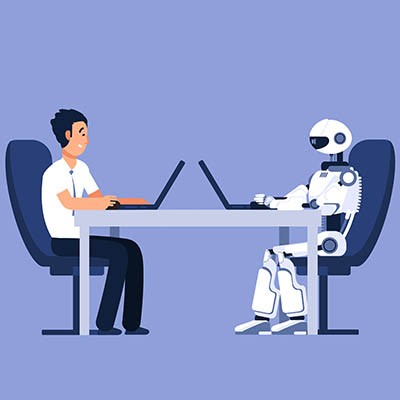Datalyst Blog
Is Automation Really a Threat for Workers?
Automation has helped many businesses improve their output and efficiency, but what is the cost to the people that work for these organizations? Many systems rely on the autonomy of artificial intelligence systems to keep certain tasks and workflows on point. Automation could replace up to a quarter of the current workforce in the next ten years, so people are naturally skeptical and worried about how safe their jobs are going to be with more and more businesses utilizing software automation.
Why Are More Things Being Automated?
Competition is the major driving force for many businesses, and automation helps businesses by streamlining operations to the point where they can reduce costs on payroll. Automation services are particularly helpful for assisting with repetitive jobs, opening up the opportunity for people’s jobs being replaced by machines and software. Unfortunately, workers don’t understand that businesses are benefiting from automation, and instead see it as an opportunity to just turn a profit at the expense of workers and job seekers. In reality, the only reason automation is used is to make certain tasks more cost-efficient.
How Does Automation Help Businesses?
Automation can help with specific processes for any business. Sales is a process that has traditionally taken a considerable amount of time, as it entails capturing leads, pursuing those leads, and working with them all the way down the sales funnel and through the service’s fulfillment. This might also include following up with the customer to investigate service satisfaction, as well as to find out if there are other services that the customer might need.
Software designed to streamline this process leans on automation. This makes the job of a company’s sales team much easier and more manageable, but more than anything else, it helps them cut costs.
How Is This Bad for Workers?
Automation is creating millions of new jobs, that is undeniable. Unfortunately for many workers, the kind of jobs being created are much different than the ones that are being automated. This creates a significant imbalance. One popular example of this is truck driving. There is a considerable push to create self-driving trucks that can eliminate truck drivers and cut down on shipping costs by effectively eliminating some payroll. After all, if a truck can get where it needs to go without a human driver, why pay a human? This shift has made the demand for software engineers greater, but how many truck drivers have coding knowledge, or the means to gain that knowledge? This is where the problem lies. Obviously, trucking is hardly the only industry affected by this issue. Automation is likely to have an effect on many industries, and as more organizations adopt automation, more engineers and developers will need to be hired to manage and maintain automated solutions. This means that more skilled workers will be needed, while other workers will be left to compete for other unskilled work. It’s a complicated issue with a complicated solution.
Therefore, if automation is going to work for businesses and for people, there will need to be some type of short-term compromise. Unfortunately, in business, in 2020, compromise is one thing many businesses cannot afford.
There is a solution, however. Businesses can begin to provide education and training to unskilled workers, which could prove fruitful in the long run, making them more marketable in the changing workforce. While this might help the situation, it is up to the business to invest in this strategy, a big “if” in today’s business culture.
At Datalyst, our knowledgeable technicians can help your organization understand the impact of automation on its industry. To learn more, reach out to us at (774) 213-9701.


Comments